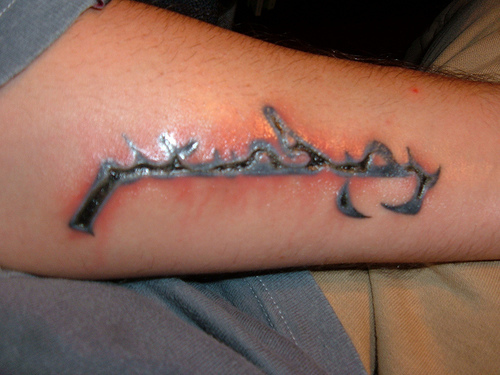How to Treat a Tattoo Infection

A tattoo is a form of body art in which an indelible ink is inserted into the top most layer of the human skin (dermis) to change the pigment. This art of painting a human body has been practiced for centuries across all cultures, particularly in Asia. However, now it is equally famous in almost all parts of the world and is a growing trend.
Whether you are getting a tattoo for the very first time or already have several on your body, it is a different experience every time you get a new one. While the skin usually heals without any complications, getting a tattoo is risky and can result in an infection sometimes. Just like for an open wound, exposed to air, dirt and dust, you need to take care of your skin after a tattoo to ensure it heals properly.
If you are getting your first tattoo, you will be at a higher risk of picking up an infection, since you don’t know the symptoms of one and may end up ignoring it. Symptoms of a tattoo infection include extreme redness or irritation, swelling, pain, fever, an unusual odour and discharge. An infected tattoo, if not treated properly, can potentially kill you, so if you notice any of the above mentioned symptoms after your recent trip to the tattoo parlor, you should seek immediate medical attention.
Instructions
-
1
If you feel like having picked up a tattoo infection, consult the tattoo artist who inked it. Most tattoo artists have been trained to treat minor infections, and can easily confirm if you are suffering from one.
-
2
After a tattoo infection has been confirmed, make an appointment with a dermatologist. The doctor will most likely prescribe you some antibiotics, as this is the most common way to treat an infection in any part of the body.
-
3
You may also be prescribed a topical antibiotic ointment as well for external use. Apply it on the infected tattoo according to your physician’s advice.
-
4
Exposure to wetness can further worsen your infection, so keep it dry all the time. Do not swim until your infected tattoo has healed completely and make sure that the infected area remains dry when you take a shower.







